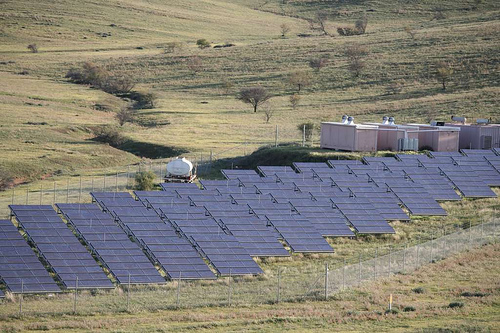Solar power has many benefits. The sun’s energy is free and widely available and doesn’t release fumes into the environment. As systems have been developed for homes to rely on solar power and utility-scale power plants have been developed with thermal solar, the renewable resource has potential to overtake conventional sources of energy. However, solar has had its setbacks from hefty installation costs to the inability to store energy, many homeowners and utility companies haven’t found solar to be cost effective. In the past couple years, though, the cost of solar has continued to decrease and more options have become available for homeowners looking for a cost effective energy solution.
Energy Savings
Many homeowners look into solar because their electricity bill has started to get too large, and they are looking for ways to cut it back or eliminate it. While most homes won’t completely disconnect from the electric grid, installing solar panels can save up to 50 percent on an electricity bill. Worried about cloudy days? Photovoltaic panels use voltaic cells that can generate electricity from both direct and indirect sunlight, so the solar panels will still function on cloudy days.
Credits and Rebates
The federal government offers tax credits for solar installation, generally up to 30 percent of the gross cost at installation. Many states will also offer a tax credit. The amount varies from state to state and will often vary based on whether it is going to a business or an individual. Some cities and utility companies will also offer credits or rebates for using solar. Look into the credits and rebates available in your area before making any purchases, so you can be sure to optimize your savings.
Solar Leasing
If an upfront installation cost is still too expensive for you, you may want to consider a solar leasing program. These programs allow homeowners to install solar panels for no money down. Instead, a solar energy company, such as home automation giant Vivint, pays for the initial installation costs, and the homeowner pays a long-term monthly leasing rate that’s about 10 percent lower than their average utility bill. Any credits or rebates would go to the installer, but the homeowner would benefit from the 10 percent savings and be able to “go green” without having to put a lot of money forward.
Solar Alternatives
If you’re not ready to take the plunge to completely running your home off of solar, you can always try it out with solar-powered garden lights, battery chargers for your laptop, or water heater.
Another alternative solution for those who are environmentally conscious is passive solar. Rather than using the sun’s energy to generate electricity, passive solar uses the sun’s interaction with the home to regulate temperature. The benefits include better natural light and regulated indoor temperatures without the gigantic electric bill all while being better for the government. A passive solar system uses a south facing window to collect sunlight that is then absorbed, stored and distributed throughout the house to keep it heated. Shading through overhangs and foliage is used to keep the house cool in the summer.
Image via David Clarke
